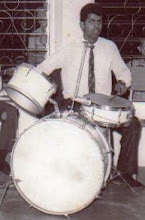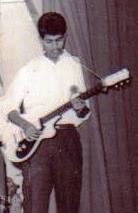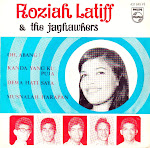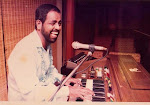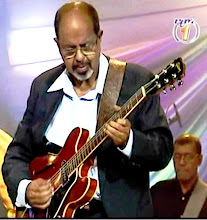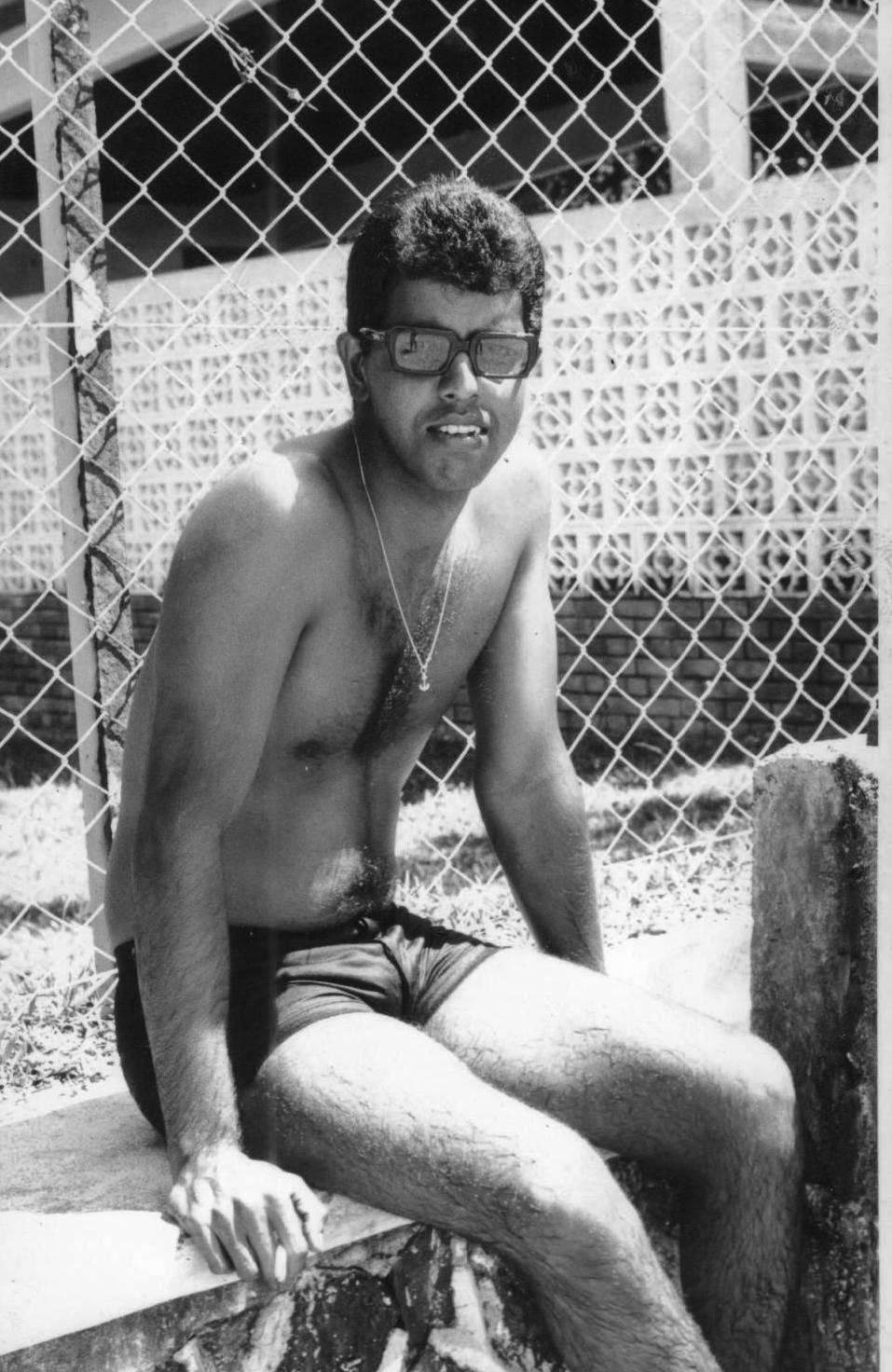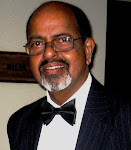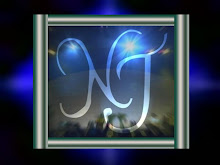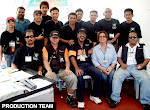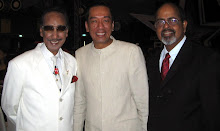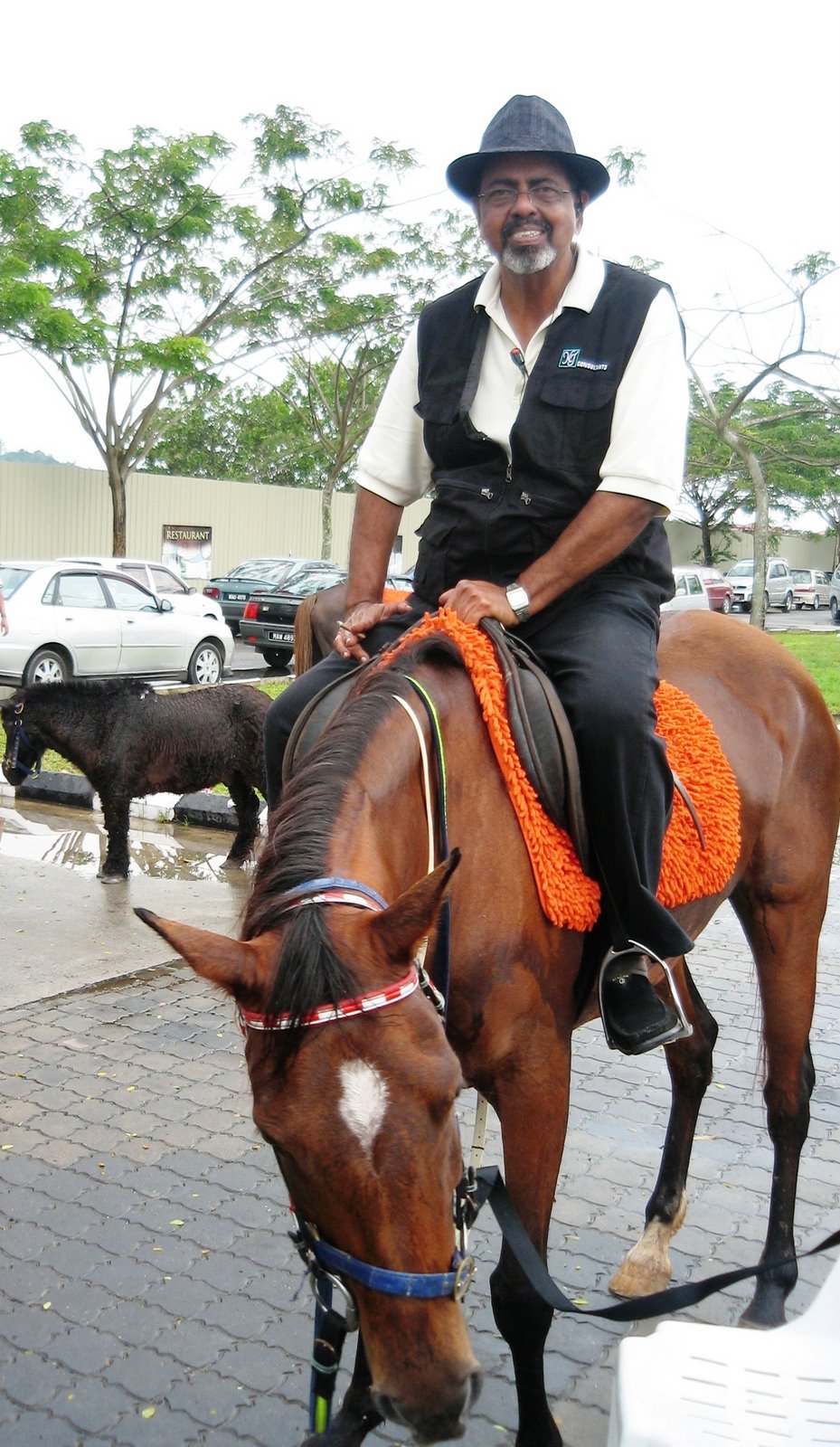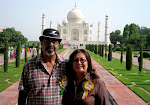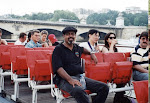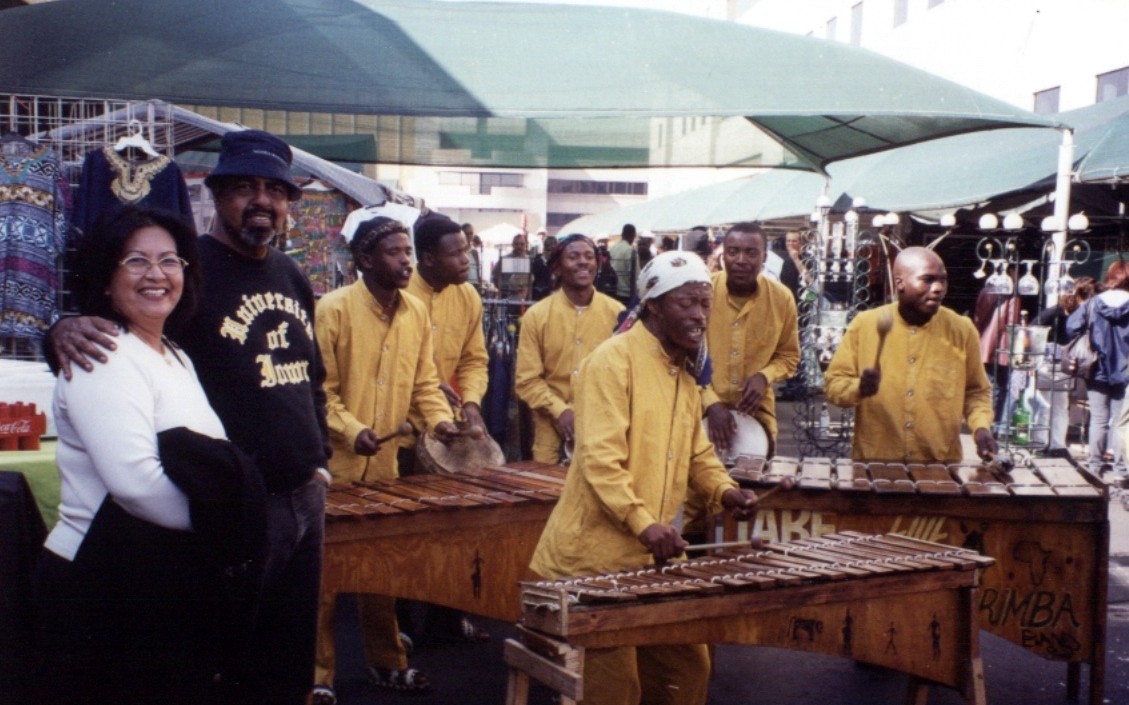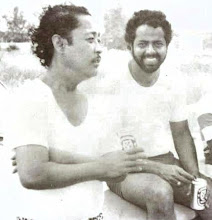
BLOGGER"S NOTE:
Tun. Dr. Mahatir (above) is probably the best known Malay of Indian ancestry today.
Overall, this appears to be a well written and believable article taken from a posting by Raja Petra in Malaysia Today blog. However, I cannot vouch for its authenticity due to its lack of “proper” references that are necessary for a properly researched article.
(Joe Chelliah @ Johami Abdullah).
KIMMA, KURMA AND KARMA
BY Sheikh Moinudeen Chisti Syed Abdul Kadir
Kurma is an excellent Indian Muslim dish. The difference between a kurma and a curry is in the chilli.
A curry is reddish because it uses dried red chillies and also dried chilli powder. A kurma does not use dried red chillies or dry chilli powder. Instead a kurma is cooked with fresh green chillies. The taste and the colour are therefore different. Both are excellent methods for cooking poultry, mutton, beef, duck and even fish.
Kimma is of course the Kongres Indian Muslim Malaysia, which is the ‘mamak’ version of the Kongres India Malaysia or Malaysian Indian Congress or MIC which itself is a namesake of the Congress Party of India. The MIC was founded by Mr John Thivy of Ipoh in the 1940s as the Malaysian chapter of Nehru’s Congress Party of India.
It is really ignorant of the KIMMA members to claim that they are Malays when their party is still named after the Congress Party of India. This is a case of extremely serious mamak confusion.
An Indian Muslim can be anyone of Indian ancestry who is a Muslim. Tamils, Keralas, Punjabis, Sindhis, Mahrattas, Hydrabadis etc are all Indian Muslims. But in Malaysia a large majority of Indian Muslims are Tamil speaking. Hence the term Indian Muslim is generally applied to the Tamil speaking Indian Muslims. In Malaysia, Indian Muslims are also known as mamaks, DKK (darah keturunan keling), Kelings and Jawi Peranakan. The last one Jawi Peranakan is a strange misnomer. There is even a recent book written about the Jawi Peranakan which actually talks about the Indian Muslims.
In contemporary Malaysia Tan Sri Syed Mokhtar Al Bukhari, Zainuddin Mydin, Siti Nurhaliza binti “Thaarudeen”, Justice Haidar Mohd Noor, Ahmad Nawab, Akbar Nawab, P Ramlee, Man Bhai, Tan Sri Elyas Omar, Tan Sri Ali Abul Hassan are all Indian Muslims or descended from Indian Muslims. Malaysia’s first Speaker of Parliament Tan Sri CM Yusuf was a mamak. So was the permanent Chairman of UMNO Tan Sri Sulaiman “Ninam” Shah. ‘Ninam’ is actually truncated Tamil for ‘Naina Mohamed’. Former Sabah Chief Minister Dato Harris Salleh and present Chief Minister Musa Aman are all mamaks. They are not Pushtuns, Pakistanis or Yemenis.
Among our Prime Ministers Tun Dr Mahathir Mohamad is the son of an Indian Muslim. Abdullah Badawi has mamak blood from his father’s side. Toh Puan Sharifah Radziah Syed Alwi Barakbah, the wife of our first PM Tunku Abdul Rahman, had mamak ancestry. The Tunku himself was of mixed Thai and mamak parentage. Ex DPM Dato Sri Anwar Ibrahim’s father is a mamak. The intellectuals Kassim Ahmad and Farish Noor have Indian Muslim fathers while the late Tan Sri Muhammad Noordin Sopiee had a mamak grandfather. Munir Majid is a Tamil speaking mamak and Tengku Adnan Tengku Mansor is a mamak too.
Here it is pertinent to note the “Syed” and “Sheikh” name. Among Indian Muslims the name Syed or Sheikh is common, its no big deal. The names “Shah” and “Khan” are also very common mamak names. Other ‘Malay’ names like ‘Chik’, ‘Tamby Chik’ and ‘Keling’ are definitely of mamak origins too.
The name ‘Shah’ is not common among the Malays but strangely enough it is very common among the Malay sultans, for example Sultan Azlan Shah and Raja Nazrin Shah. Shah is NOT an Arabic name. It originates from Persia and comes to Malaysia from India through the Indian Muslim influence. This is just more indication of the mamak ancestry of our Malay rulers.
But among kampong Malays the name Syed and Sheikh are supposed to indicate Arab ancestry, the name Syed being associated with ‘keturunan nabi’ or lineage from the Prophet. To the kampong Malays these names are a really big deal. This is the furthest thing from the truth. Another common mamak name is ‘Maricar’. Actually it is ‘Marikiyaar’. This has evolved into ‘Merican’. Hence the thousands of Malays who bear the ‘Merican’ name today are also of mamak ancestry. They call themselves Jawi Peranakan. They are actually mamak.
Many smart Indian Muslims realized very early on this Malay liking for Arabic names and Arab ancestry. So they started passing themselves off, (or did not object if they were referred to) as Arabs, usually of Yemeni descent. In Malaysia too many Syeds and Sheikhs from among the Malays today are actually recycled mamaks. One good example is Tan Sri Syed Mokhtar Al Bukhari. Among the Malay elite Tan Sri Syed Mukhtar Bukhari passes of as being of Yemeni descent. His family actually comes from India. The former mayor of KL Tan Sri Elyas Omar is also of Tamil mamak origins from Penang.
Among the Malays it is also ‘ok’ if a mamak is from Pakistani descent. Perhaps Pakistan is closer to Bollywood. So some clever mamaks claim to be from Pakistan. The former Sabah Chief Minister Harris Salleh and present Chief Minister Musa Aman are said to be ‘of Pakistan origins’ but in actual fact they are of Indian mamak ancestry, and usually Tamil speaking.
Mamaks come in all colours and complexions from the dark skinned to the light skinned, green eyed and brown eyed types. A visit to the Masjid Kapitan Keling in Pitt Street in Penang or Masjid India in Kuala Lumpur on a Friday will witness all varieties of mamak.
The Indian Muslims in Malaysia today can be classified as follows :
1. Those mamaks who have inter married with Malays for generations and have actually become Malays. You can only know their mamak ancestry by their mamak sounding names like Merican, Shah, Syed, Sheikh etc, by their ‘Indian’ appearances – prominent nose, rounder eyes etc.
2. Those mamaks who have not inter married with Malays but who have assimilated closely into the Malay culture. They can only speak Malay and have cut off almost all their links with India. These would include thousands of mamaks in Penang, Kedah, Melaka and other parts of the country. Only their DNA remains Indian. But practically, for all intents and purposes they are Malay.
3. Those mamaks who are still very much Tamil and who can only speak pasar Malay. They may not have links with India but they watch Tamil movies and do not read the Malay papers or know much about the Malays. Despite being born in Malaysia they still would not know a ‘kuih talam’ from an ‘otak-otak’. Many KIMMA members fall in this category. That is why they still call themselves Kongres Indian Muslim Malaysia after the Indian Congress Party of Panditji Jawaharlal Nehru.
4. Those mamaks who are still very much Tamil and who cannot even speak pasar Malay despite being born in Malaysia. They will not know ‘nasi lemak’ from a hole in the ground. They will have strong family ties to India. They watch Tamil movies and know more about Tamil Nadu politics than Malaysia politics. They read Tamil Nesan and Malaysian Nanban religiously everyday to find out what is happening in Tamil Nadu and India. Again many KIMMA members also fall into this category.
Before 1970 the last two classes of Indian Muslims above (no.3 & 4) were usually overtly prejudiced against the Malays. Before 1970 many of them were not even citizens of the country. Their slang term for Malays was 'valayan-katti'. This is a term invented by Tamil estate workers but which became widely used by most Tamils including Indian Muslims to describe Malays.
A 'valayan' means wire. 'Katti' means to tie something. So ‘valayan-katti means ‘a person who ties a wire’. What does this mean? In the early days of the rubber industry, the British tried to get the Malays to tap the rubber trees. However the native Malays had problems tapping the rubber tree in the proper manner and ended up injuring the tree, reducing the output of rubber. The British had better luck getting the trees properly tapped with the Tamils from India. Malays were then delegated the simpler job of using wire (valayan) to tie (katti) the little latex cups to the rubber tree. Hence the name ‘valayan-katti’.
Another Tamil term used for Malays is ‘naattu kaaran’ or ‘naattan’ which means ‘native’.
Before 1970 the type 3 and 4 mamaks above and everyone else did not see much in the Malays. But post 1970 and the New Economic Policy the mamaks realized that they suddenly depended on the Malay for everything, especially the ever precious ‘Entry Permit’ to get Permanent Resident status in Malaysia. Until then few mamaks got married in Malaysia. They always went back to India to get married. After 1970 and the NEP, the trend disappeared in a hurry. The Malays refused to give Entry Permits for mamak brides and grooms from India. All of a sudden mamaks realized that they were short of wives and husbands. Hence the rate of inter marriage between mamaks and Malays increased tremendously after 1970. After 38 years of the NEP, the mamaks are even more assimilated now through marriage than ever before. Today there is rarely a mamak family which does not have a Malay son or daughter in law.
Post 1970, the mamaks realized that real political power and with it economic largesse had shifted to the Malays. But many mamaks included in class 1 and 2 above had no problem with this shift in power because often they were the ones holding high office. For example the first Speaker of Parliament CM Yusuf, a mamak, was his own power in his day. It was only the class 3 and 4 mamaks described above who were (and still are) slow in assimilating into becoming Malaysians. The KIMMA represents many of these people.
Hence the present scramble among them to be recognized as bumiputras, to get Malay classification in the Birth Certificate, BIN in the IC etc. But it is a fact that the Indian Muslims are heavily intermarried with Malays. This trend started over 600 years ago and continues until today. They and their offspring have played major roles in the history of this country. Sang Nila Utama, Parameswara, Tun Ali, Hang Kasthuri, Hang Tuah, Mani Purindan, Tun Teja, Abdullah Munshi and ALL the Malay Sultans are descended from Indian Muslims. The Perlis Royal family is almost certainly of mamak/Thai mix.
It is also true beyond any single doubt that from their earliest history here, the mamaks have had extreme affection which the Indian Muslims have had for the Malays throughout history. This could be attributed to the similarities in religion but there are also other Muslims in the country (including from India) like Pakistanis, Punjabi Muslims, Patans and also others like the Chinese Muslims.
Although the Indian Muslims are generally friendly with all races there is not as much intermarriage between Indian Muslims and other Muslims compared to the heavy intermixing and intermarriages between Indian Muslims and the Malays.
And it is an established fact (evidenced by all the names mentioned above) that throughout history the Indian Muslims have always stepped forward to defend the rights of the Malays. In the process many of the Indian Muslims have lost their identity almost completely to the Malays. Who are the descendants of the Tamil educated Munshi Abdullah today? No one knows. A DNA test will reveal Indian DNA among all our Malay rulers but which Sultan can or wants to retrace his Indian ancestry? These are the mamaks who assimilated into the Malay community from generations ago.
Fast forward to today : in UMNO there are thousands of mamaks fighting for Malay rights. In PAS there are mamaks fighting for Islam (aka Malay) rights. PAS stalwart Hanipa Mydin is a pure mamak while Deputy MB of Kelantan Dato Husam Musa may have mamak blood. In the old Keadilan ‘brother’ Abdul Rahman Othman, another mamak tulen, became party secretary general and then quit later – to join PAS. In the Civil Service and in the Melayu korporat sector there are thousands of mamaks helping the NEP ‘social engineering’ come true.
In Penang pure Malays are a rarity. As late as the 80s, they could only be found in Sungai Ara, Balik Pulau and other places where there were no roads. In all other places in Penang, mamak blood is almost a certainty. Hence words like ‘chacha’ and ‘nana’ are a part of Penang Malay. In Kedah and Melaka the mamak ‘penetration’ of the Malay populace is much more earlier than in Penang. Which means the mamaks in Kedah and Melaka have diluted their DNA into the Malay population from much earlier (from Portugese, Dutch and British times).
In short mamaks are a permanent feature of the Malay ‘make up’. It is the karma of the mamaks that they have become kurma in Malaysia.



